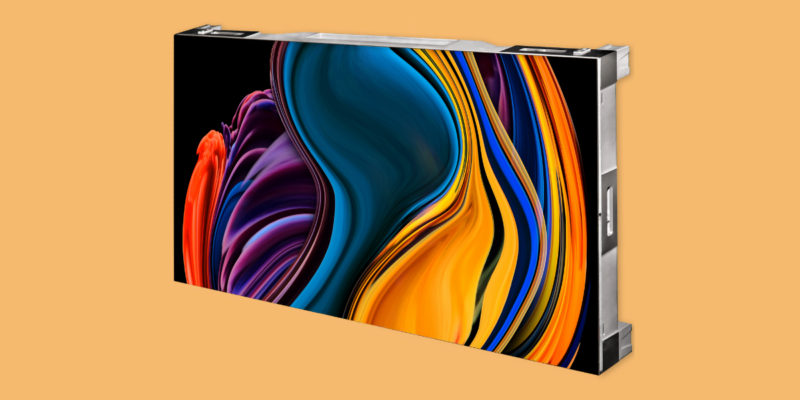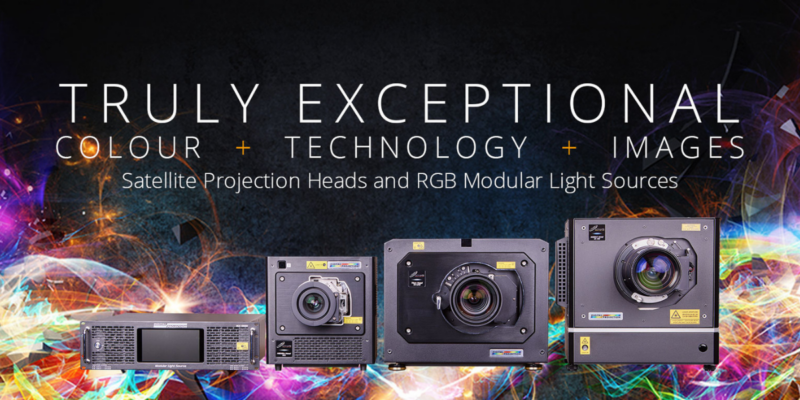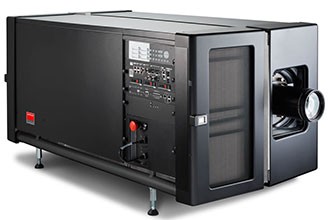Interview With DPI’s Michael Bridwell on LED Projectors
 Insight Media visited Digital Projection International (DPI) at CEDIA and see their LED projectors but had little time to talk. Therefore, I did a follow-up e-mail interview with DPI’s Director of Marketing, Michael Bridwell. In particular, we focused on DPI’s LED projectors, the M-Vision LED and dVision LED projectors. Not surprisingly, when asked directly about these two projectors, he did not go into the details of the technology and components that allowed the upgrade in lumen output from these two projectors. He did give an initial general comment on the technology of LED projectors, however.
Insight Media visited Digital Projection International (DPI) at CEDIA and see their LED projectors but had little time to talk. Therefore, I did a follow-up e-mail interview with DPI’s Director of Marketing, Michael Bridwell. In particular, we focused on DPI’s LED projectors, the M-Vision LED and dVision LED projectors. Not surprisingly, when asked directly about these two projectors, he did not go into the details of the technology and components that allowed the upgrade in lumen output from these two projectors. He did give an initial general comment on the technology of LED projectors, however.
Digital Projection’s Michael Bridwell: This is a tough topic for us, or for any projector manufacturer for that matter, to tackle. There are only two sources of LEDs at the moment: Luminus and Osram. Regardless of who you use, the overall light output will likely vary less than 6 percent. The batch of LEDs that you select for your display also makes a difference, but again, only about 5 percent. And what a projector manufacturer does in the light path of the display can also enhance the brightness, but nominally at best. So, if you’re really interested in researching LEDs as a light source, I’d go directly to the sources on this one as you’ll get a straight answer. Just being honest.
Insight Media’s Matt Brennesholtz: How did CEDIA go for DPI?
DPI: Quite well overall, once you shift your expectations from the old days of CEDIA to the current. Traffic was down around 15 percent from last year, but the overall quality of the traffic continues to be high. With the gains we’ve made in market share the last few years, we’re not meeting as many new faces. More often than not, we’re going directly into deeper discussions on specific projects that the integrators have. And that’s exactly where we’re most comfortable, diving directly into the dynamics of the application and trying to help the integrators answer their specific display questions.
IM: What projectors were you showing at CEDIA?
DPI: Numerous projectors from our single and 3-chip lineup, including 2D, 3D and LED driven solutions. Our 8,000 [lumen] E-Vision 1080p and HIGHlite 1080p displays worked in conjunction with our 16,000 lumen TITAN Quad 1080p displays in a 6 screen array, fully exposed to show lighting. This was intended to demonstrate the versatility and image quality of the product line, even when exposed to harsh lighting conditions. Very important demonstration for those integrators considering projection for media and outdoor applications, as well as those crossing over into light commercial and corporate venue work. In two dedicated theaters we showed our new 3D-enabled 3-chip HIGHlite 1080p 3D, which will begin shipping in December, and our 1100 lumen dVision LED, as well as our 2560 x 1080 resolution dVision Scope, that displays 2.35 content without the need of an anamorphic lens. Plenty to see, to be sure.
IM: Your website says the M-Vision Cine is 600 lumens. Is that the new version or is that the spec for the old version?
DPI: The M-Vision LED line will soon see incremental increases in brightness, with an estimate of 700 lumens.
IM: Is the M-Vision Cine LED strictly for home theater or do you see other applications for it?
DPI: LED projectors are extremely important for 24-7 and critical commercial applications. Their value proposition is incomparable: extremelylong life light sources (beyond 60,000 hours) with no lamps to replace, lower heat output and thus lower fan noise, and a remarkable color space. And that’s just the beginning. We’ve already seen M-Vision LEDs sold into control rooms, surveillance rooms and visualization environments.
IM: You discuss the H-K Effect in your press release. Can you give a rough estimate of how much of a boost the H-K effect gives a LED-based projector compared to a similar projector with the same ANSI lumens and a mercury lamp?
DPI: I’ve seen anecdotal findings that suggest brightness perceived from LEDs can be over 25 percent brighter than a comparable lamp-based source. We have found that, when an integrator or end user is asked how bright an LED image is that we’re demonstrating, they tend to perceive the image as being around 20 percent brighter.
IM: With the improvements in LEDs and other technologies, we have come to expect continuous luminance improvements in LED-based projectors. Do you see an upper limit to the lumen output of LED projectors based on the physical limitations on LEDs?
DPI: At the moment, there’s a brightness plateau. But never underestimate human ingenuity.
IM: Do you see laser-based projectors entering the home theater market in the next few years or are LEDs going to remain the main solid-state illumination source?
DPI: Not ready to comment on this yet.
IM: LEDs have some very desirable properties in the home cinema market, particularly long life and excellent colors. Do you see LED illumination coming to dominate in this market?
DPI: I think that every integrator needs to experience an appropriate and well-conceived LED projector demonstration, and make decisions based on what the best solution is for their specific need. For some uses, especially when ambient light is controlled and the screen size is reasonable, LED displays are remarkable solutions. Time will tell how ubiquitous they become, but we’re big believers in the technology.
IM: Anything else you can add about DPI projectors and CEDIA?
DPI: We depend on the well-educated CEDIA-grade dealer community as our primary path to market, and we’re hoping that CEDIA as an association can find a way to reinvigorate their exhibitions.
For more details on DPI LED projectors, see my Display Central post.





